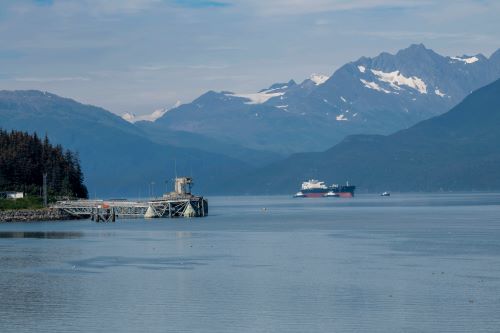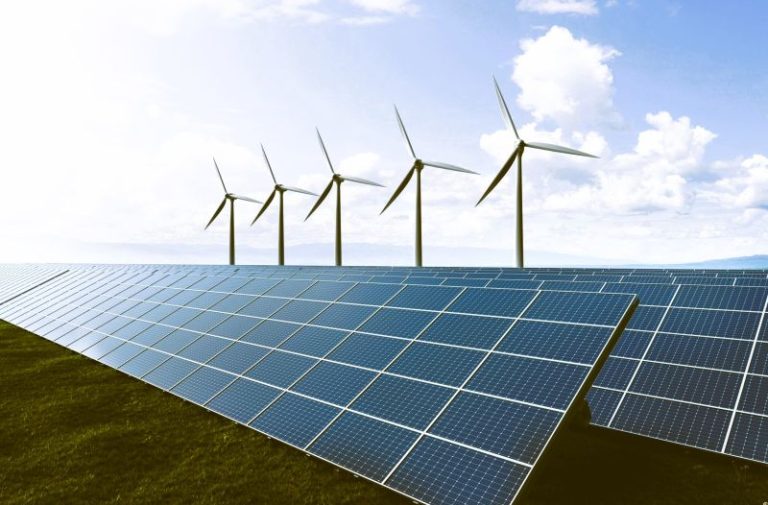

It further benefit oil and gas CEOs and investors at the expense of health.

By Mariel Lutz
Research Associate, Conservation Policy
The Center for American Progress

By Jenny Rowland-Shea
Director, Public Lands
The Center for American Progress
Introduction
More than $250 billion: That is how much profit the five largest oil and gas companies based in the United States made between 2021 and 2023—more than the federal government spent on student loan programs in fiscal year 2023. The oil and gas industry also received billions of dollars in the form of subsidies from the federal government in FY 2022, while not using more than 23 million acres of public lands and waters they had under lease as of 2021 nor acting upon thousands of permits they had for drilling as of 2022. Despite this abundance of money and land that the industry already holds, the far-right policy road map known as Project 2025 would give it even more public resources. Project 2025 aims to further enrich the oil and gas elite at the expense of everyday Americans’ health, well-being, and economic freedom.
Project 2025 Would Abet the Oil and Gas Industry
Overview
Policies that benefit the oil and gas elite at the expense of the public riddle the Project 2025 chapter focused on public lands. Despite the staggering profits and financial benefits the industry already receives, this plan would further shift the balance of America’s public lands and waters toward oil and gas.
Preferential Treatment for Oil and Gas
Project 2025 would implement a multipronged approach to prioritize oil and gas activities on public lands and waters, including the reinstatement of multiple Trump administration directives. This includes assessing and changing practices, such as natural resource protections, at the U.S. Department of the Interior—which manages public lands and waters—that could hinder oil and gas activities. During the Trump administration, this assessment process led to, among other changes, natural spaces losing protections in the face of oil and gas activities. Furthermore, Project 2025 recommends that the U.S. Bureau of Land Management, the branch of the Department of the Interior that oversees oil and gas activity on public lands, get rid of barriers to bolstering oil and gas activities.
Project 2025 also includes proposals for how to get more land and water into the hands of oil and gas companies with changes to lease sales for oil and gas, which are when companies can bid for the right to rent and develop on public lands and waters. Given the current schedule for offshore oil and gas lease sales, Project 2025 recommends not only making as much of the country’s public waters as possible available for leasing but also redoing the current schedule, which could put significantly more public waters up for rent. Additionally, Project 2025 directs the federal government to auction off public lands every quarter.
Less Accountability for Polluters
Project 2025 would reduce accountability for polluters by removing safeguards that were implemented by the Biden-Harris administration. Oil and gas companies could more easily pay to waste methane that they extract from public lands without having to capture it because Project 2025 would undo a regulation that protects against excessive methane emissions. Removing that regulation would also undo implementation of the recovery of funds from oil and gas companies’ waste of fuel while occupying public and Tribal lands—recovery that could return $51 million per year to Tribal owners and taxpayers.
Protected Places at Risk
Project 2025 takes aim at specific and precious places across the country. For example, its policies would offer up millions of acres across the North Slope of Alaska, both in the Arctic National Wildlife Refuge and the Western Arctic, to the oil and gas industry for leasing and drilling. Resource management plans—plans that outline how hundreds of millions of acres of public lands are managed—that have been recently finalized are also a target of Project 2025, which suggests making changes to them that could facilitate oil and gas activities. And Project 2025 is not just focused on land—it also could offer up more than 100 million acres off the east coast and the coast of Alaska of currently protected public waters for oil and gas leasing and drilling.
The Oil and Gas Giveaways Would Hurty Everyday Americans
Overview
Increased oil and gas activities from Project 2025 would damage more of the country’s public lands and waters, from more drilling in natural areas to more pollution from oil and gas activities. The potential damage extends well beyond nature, to people both near and far from the actual operations.
More Oil and Gas Pollution
An increase in oil and gas drilling is likely to lead to an increase in pollution. Fossil fuel pollution is more present in communities of color and communities with less wealth, and oil and gas infrastructure is more likely to be closer to those communities. Considering that pollution from oil and gas infrastructure most acutely risks the health of people nearby, increased oil and gas development, spurred on by Project 2025, could further hurt already overburdened communities. Furthermore, because of Project 2025’s plan to undo a methane regulation, companies would not be held to the stronger safeguards on methane currently in place and could pollute more with less accountability. Methane is a greenhouse gas and can make air pollution worse, so efforts to limit methane waste not only ensure that companies use public lands more productively but also help protect public health by reducing harmful emissions.
More Land Locked Up, Less Access to Nature
Pollution isn’t the only way that Project 2025 could allow the oil and gas industry to harm Americans’ well-being. Every place that is handed over to the oil and gas industry is a place where recreation and conservation can no longer be prioritized or considered, even if the land or water is never developed. This translates to fewer places for people to be outside and in nature. The United States already has substantial gaps in access to nature, with low-income communities and communities of color having significantly less access than others. Project 2025’s proposals would jeopardize the public’s access to nature and nature itself. Land leased to the oil and gas industry cannot be conserved or restored, and this comes at a time when it is vital to protect more natural areas, not less.
Shutting Out Economic Diversity
In addition to potentially locking up and polluting public lands and waters, the favors to the oil and gas industry in Project 2025 could hurt the outdoor recreation and renewable energy economies. Outdoor recreation supports more than 4 million jobs, and renewable energy supports more than 8 million jobs. Meanwhile, the number of jobs needed to extract more oil and gas has dropped repeatedly over the past 10 years. Project 2025’s prioritization of oil and gas puts existing and future jobs in the outdoor recreation and renewable energy industries at risk.
Conclusion
Project 2025’s handouts to the oil and gas industry would not only harm America’s public lands and waters but would also negatively affect public health and the U.S. economy. Instead of benefiting the majority of the country, these policies would make CEOs and investors richer through exploiting the country’s natural resources. The American public deserves to benefit from their public lands and waters, but Project 2025 would ensure that the oil and gas elite have access first.
Originally published by The Center for American Progress, 10.17.2024, republished with permission educational, for non-commercial purposes.


